Evolution is not just a theory but a well-documented process evidenced by numerous fossils discovered over centuries. These preserved remains have provided scientists with valuable insights into how species have changed over time, revealing the intricate tapestry of life’s history on Earth. The following eleven fossils represent some of the most significant discoveries that have shaped our understanding of evolutionary processes, filling crucial gaps in our knowledge and challenging previous assumptions about how life has developed on our planet.
Archaeopteryx: The Missing Link Between Dinosaurs and Birds
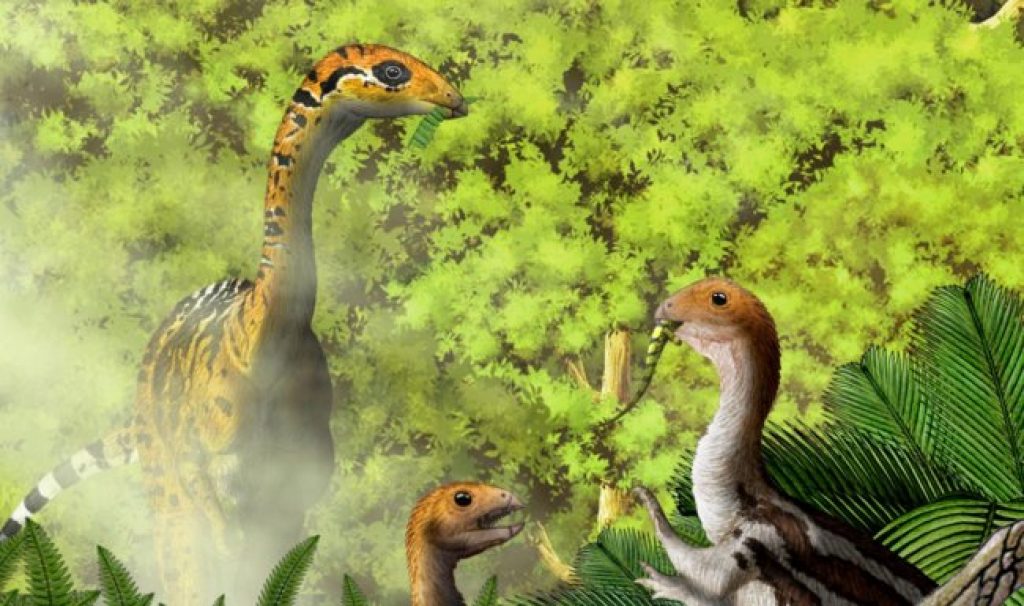
Discovered in 1861 in southern Germany, Archaeopteryx represents one of the most important transitional fossils ever found. This 150-million-year-old specimen beautifully demonstrates features of both dinosaurs and modern birds, providing compelling evidence for the evolutionary connection between these groups.
Archaeopteryx possessed teeth, a long bony tail, and three-fingered hands with claws—all reptilian characteristics—while simultaneously exhibiting avian features like feathers and a wishbone. The discovery came just two years after Darwin published “On the Origin of Species,” offering timely evidence for his controversial theory. Scientists continue studying Archaeopteryx specimens to understand the complex evolutionary pathway from ground-dwelling dinosaurs to the diverse birds that fill our skies today.
Tiktaalik: The Fish That Walked

Unearthed in the Canadian Arctic in 2004, Tiktaalik roseae represents a crucial evolutionary step in the transition from aquatic to terrestrial life. This 375-million-year-old fossil has been nicknamed the “fishapod” due to its fascinating combination of fish and tetrapod (four-limbed animal) characteristics. Tiktaalik possessed gills and scales like a fish, but also had primitive lungs, a flexible neck, and most significantly, fin bones arranged in a pattern that would later evolve into limbs capable of supporting weight on land.
The creature’s flat head with eyes on top suggests it lived in shallow waters, possibly venturing onto land for short periods. This remarkable fossil has helped scientists understand how fins gradually evolved into the limbs that would eventually carry vertebrates onto land, fundamentally changing life on Earth.
Lucy: Illuminating Human Origins

In 1974, paleoanthropologist Donald Johanson made a remarkable discovery in Ethiopia—a partial skeleton of an Australopithecus afarensis individual later named “Lucy.” Dating back approximately 3.2 million years, Lucy provided unprecedented insights into human evolution during a crucial period. The fossil’s anatomical features revealed that bipedalism (walking upright on two legs) evolved before the significant brain enlargement seen in later human species, contradicting earlier assumptions about the sequence of human evolutionary development.
Lucy’s skeleton showed a combination of ape-like and human-like traits: a relatively small brain similar to chimpanzees but a pelvis and leg bones adapted for bipedal locomotion. This discovery revolutionized our understanding of human origins and established Australopithecus afarensis as a potential direct ancestor in the human evolutionary lineage, demonstrating the mosaic pattern of evolutionary change.
Ambulocetus: The Walking Whale
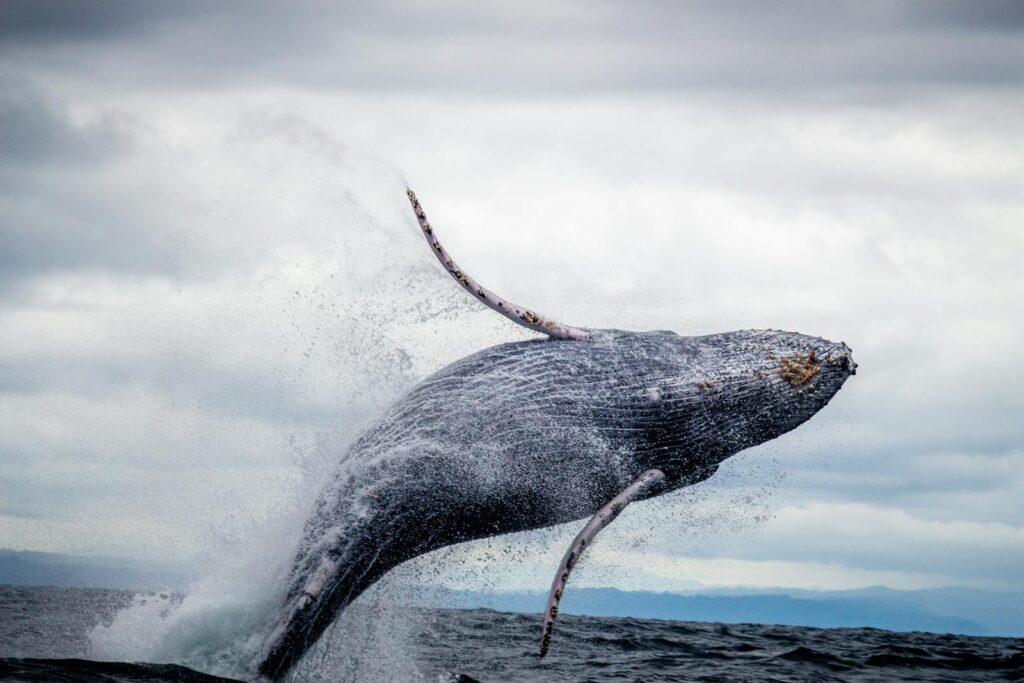
Discovered in Pakistan in 1992, Ambulocetus natans (literally “walking whale that swims”) provided crucial evidence for the evolutionary transition of mammals from land to sea. Dating back approximately 49 million years, this remarkable fossil represents an early cetacean that still retained four functional limbs. Ambulocetus exhibited an intriguing combination of terrestrial and aquatic adaptations—it had legs capable of supporting its weight on land, but its feet were likely webbed and its tail powerful for swimming.
Its skull structure suggests it hunted like modern crocodiles, lying in wait in shallow water to ambush prey. This fossil helped fill a significant gap in understanding how the ancestors of modern whales and dolphins abandoned land-dwelling to become fully aquatic mammals, providing compelling evidence of the incremental evolutionary steps in this dramatic transition from terrestrial to marine life.
Homo floresiensis: The Unexpected Hominin

In 2003, archaeologists working in Indonesia’s Flores island made an astonishing discovery that would challenge conventional understanding of human evolution—the remains of a previously unknown hominin species later named Homo floresiensis. Nicknamed the “Hobbit” due to its small stature (approximately 3.5 feet tall), this species lived as recently as 50,000 years ago, meaning it coexisted with modern humans.
Despite its small body, H. floresiensis had a proportionally small brain yet manufactured stone tools and possibly used fire. The discovery demonstrated that human evolution was not a simple linear progression but rather a complex branching tree with multiple contemporaneous species. Scientists continue debating whether H. floresiensis represents a case of island dwarfism from Homo erectus ancestors or a separate lineage that diverged earlier from the human family tree, illustrating how new fossil discoveries can dramatically reshape our understanding of evolutionary pathways.
Pikaia: The Earliest Known Chordate
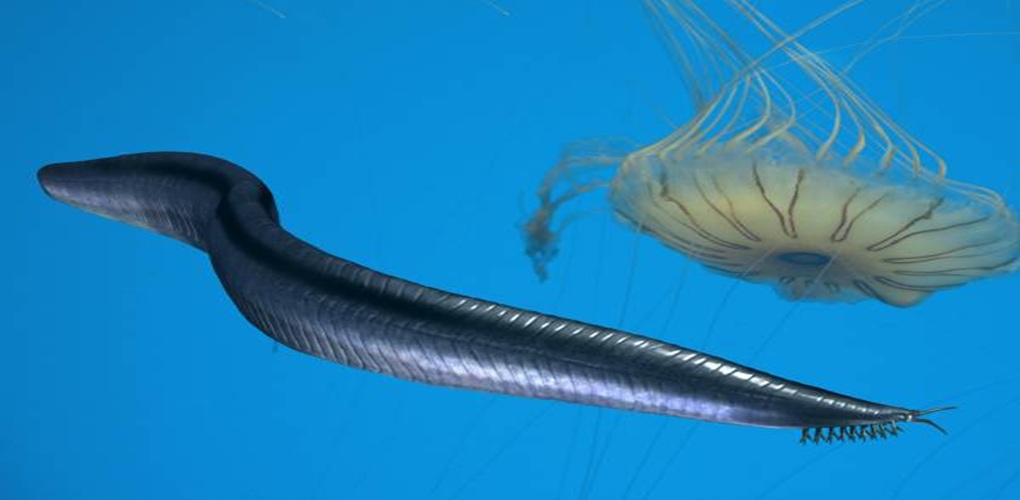
Discovered in the famous Burgess Shale formation of British Columbia, Pikaia gracilens is a 505-million-year-old fossil that represents one of the earliest known members of the chordate lineage—the animal group that includes all vertebrates. This small, worm-like creature, measuring about five centimeters in length, exhibited the defining characteristic of chordates: a notochord, or primitive backbone, running along its body.
Pikaia also possessed a distinct head and tail, with muscle segments that would have allowed it to swim by moving its body side to side. The significance of this fossil cannot be overstated, as it provides evidence for the ancient origins of the vertebrate body plan that would eventually give rise to fish, amphibians, reptiles, birds, and mammals, including humans.
Pikaia demonstrates that the fundamental features that define our phylum were already present during the Cambrian explosion, the remarkable period of rapid evolutionary diversification that occurred over 500 million years ago.
Ichthyostega: Pioneer of Land Vertebrates
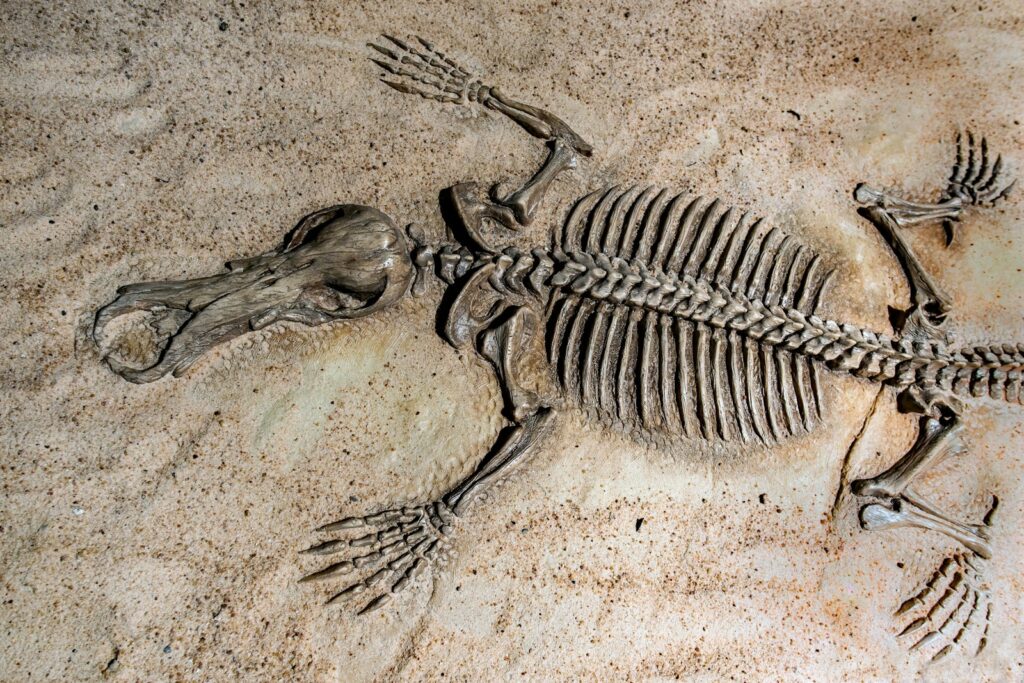
Discovered in eastern Greenland in the 1930s, Ichthyostega provided scientists with critical insights into one of evolution’s most significant transitions: the move from water to land. Dating from approximately 365 million years ago during the Late Devonian period, this remarkable fossil represents an early tetrapod with features of both fish and amphibians.
Ichthyostega possessed sturdy limbs with digits that could support its weight on land, yet it retained a fish-like tail and other aquatic adaptations. Its skeletal structure suggests it moved on land with a unique body-dragging motion rather than the walking gait of modern tetrapods. Further research on Ichthyostega fossils has revealed a complex vertebral column that would have allowed surprising flexibility, challenging previous assumptions about how early land vertebrates moved.
This fossil continues to help scientists understand the series of anatomical adaptations that enabled vertebrates to conquer terrestrial environments, representing a crucial evolutionary step that ultimately led to the diverse land vertebrates we see today.
Thrinaxodon: The Mammal-like Reptile

Thrinaxodon, whose fossils have been discovered in South Africa and Antarctica, represents a crucial transitional form in the evolution from reptiles to mammals. Dating back approximately 250 million years to the Early Triassic period, this dog-sized cynodont possessed an intriguing mix of reptilian and mammalian characteristics. While Thrinaxodon retained some reptilian features like a vestigial third eye on top of its skull, it showed several mammalian traits, including differentiated teeth specialized for different functions, a secondary palate allowing simultaneous eating and breathing, and possibly whiskers and fur.
Most significantly, its jaw structure was evolving toward the mammalian condition, with the dentary bone expanding to form part of the jaw joint. This fossil helps illustrate the gradual acquisition of mammalian characteristics over millions of years rather than in a single evolutionary leap, providing critical evidence for understanding how the diverse group of mammals eventually evolved from reptilian ancestors after the devastating Permian-Triassic extinction event.
Darwinius Masillae: The Primate Connection
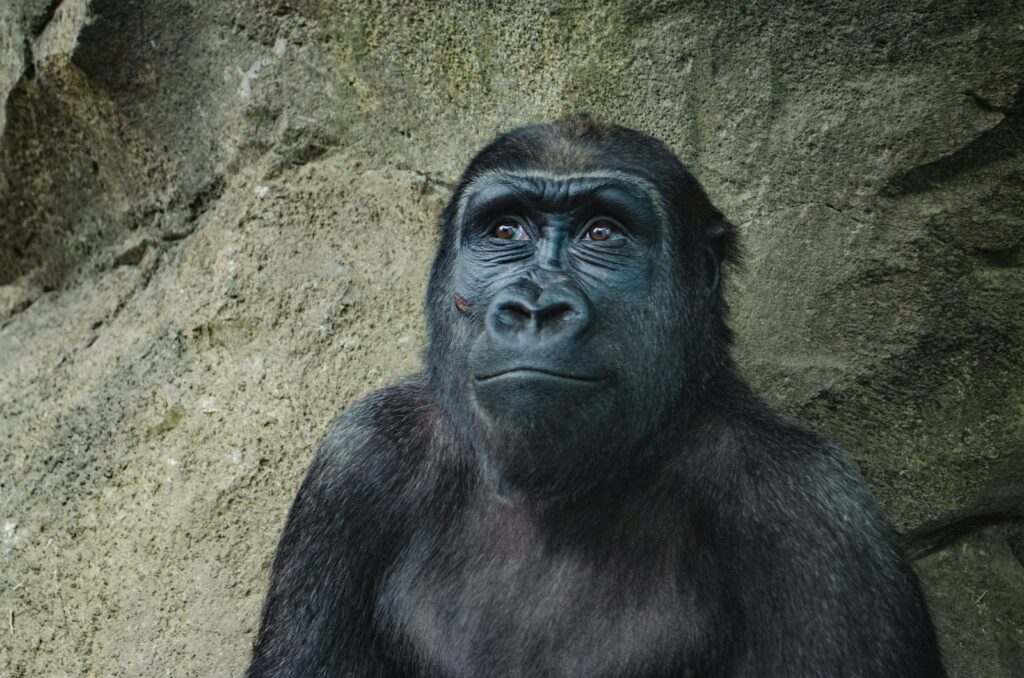
Discovered in Germany’s Messel Pit in 1983 but not scientifically described until 2009, Darwinius masillae (nicknamed “Ida”) is a remarkably complete 47-million-year-old primate fossil that has contributed significantly to our understanding of primate evolution. This lemur-like creature measured about three feet in length and represents an early haplorhine primate, showing features that place it near the divergence of the evolutionary lines leading to monkeys, apes, and humans (anthropoids) from prosimians (lemurs and lorises).
What makes Ida extraordinary is her exceptional preservation—approximately 95% of the skeleton is intact, along with impressions of soft tissues and even the remains of her last meal. The fossil displays transitional features, including primate-like grasping hands with opposable thumbs and nails rather than claws. While initial claims about Ida’s direct relationship to human ancestry were later tempered by further analysis, this spectacular fossil nonetheless provides valuable insights into the early evolutionary history of primates during the Eocene epoch, a critical period in mammalian diversification.
Basilosaurus: Ancient Whale Evolution

First discovered in the 1830s and initially misidentified as a reptile (hence the name meaning “king lizard”), Basilosaurus represents a crucial stage in cetacean evolution. This 40-million-year-old fossil from the late Eocene epoch revealed an enormous marine mammal reaching lengths of up to 60 feet with a serpentine body.
What makes Basilosaurus particularly significant for evolutionary understanding is the presence of small, functionless hind limbs complete with feet and toes—clear vestiges of its terrestrial ancestry that would eventually disappear in modern whales and dolphins. The skull structure shows adaptations for underwater hearing and a powerful jaw specialized for predation, while the vertebrae demonstrate adaptations for a fully aquatic lifestyle.
Basilosaurus fossils, found primarily in Egypt and the southern United States, provide compelling evidence of the evolutionary pathway from land-dwelling mammals to fully aquatic cetaceans, showing how evolution often repurposes existing structures rather than creating entirely new ones. This fossil dramatically illustrates how descendants of terrestrial mammals returned to marine environments through a series of evolutionary adaptations over millions of years.
Ardipithecus Ramidus: Redefining Human Origins
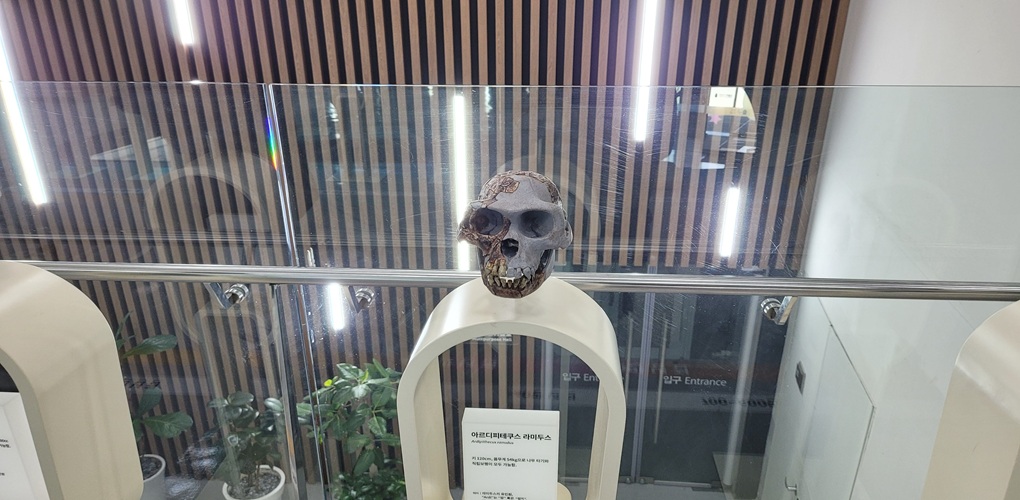
The discovery of Ardipithecus ramidus in Ethiopia’s Afar region, particularly the remarkably complete specimen nicknamed “Ardi” found in 1994 but not fully analyzed until 2009, fundamentally altered the scientific understanding of human origins. Dating to approximately 4.4 million years ago, Ardi predates the famous Lucy fossil by more than a million years and presents a surprisingly complex picture of early hominin evolution. Contrary to expectations, the Ardipithecus displayed an unexpected combination of features: while capable of walking upright on two legs, it retained adaptations for tree climbing, including an opposable big toe.
Most significantly, Ardi’s anatomy suggests that many features previously thought to be characteristic of chimpanzees—our closest living relatives—may actually be later specializations rather than ancestral conditions. The pelvis and foot structure indicate a form of bipedalism different from both modern humans and chimpanzees, suggesting that the last common ancestor of humans and chimps may have been quite different from modern apes. This fossil has forced scientists to reconsider fundamental assumptions about human evolution and has expanded our understanding of the diverse locomotor adaptations in early hominins.
Tully Monster: The Evolutionary Puzzle
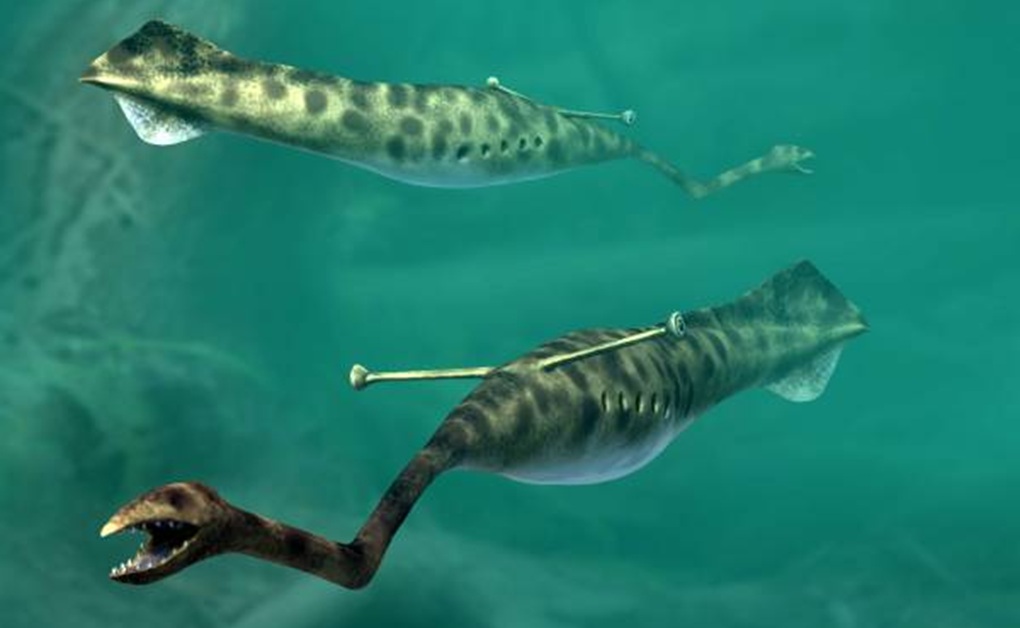
The Tully Monster (Tullimonstrum gregarium), discovered in Illinois coal deposits dating back 300 million years, represents one of paleontology’s most perplexing evolutionary enigmas. This bizarre creature, named after its discoverer Francis Tully, possessed a torpedo-shaped body with a proboscis ending in a claw-like structure, eyes on stalks, and a tail fin.
Despite being discovered in 1958 and intensively studied for decades, scientists have struggled to determine its proper place on the evolutionary tree. Initially classified as an invertebrate of uncertain affinity, more recent studies using advanced techniques have variously suggested it might be a vertebrate related to lampreys, a specialized mollusk, or an arthropod.
The ongoing scientific debate surrounding the Tully Monster demonstrates how some fossils continue to challenge our understanding of evolutionary relationships and classifications. This fossil reminds us that the evolutionary story of life on Earth contains many yet-unsolved mysteries and that new analytical techniques and discoveries continue to revise our understanding of ancient life forms and their relationships to modern organisms.
Conclusion: The Evolutionary Tapestry Revealed Through Fossils
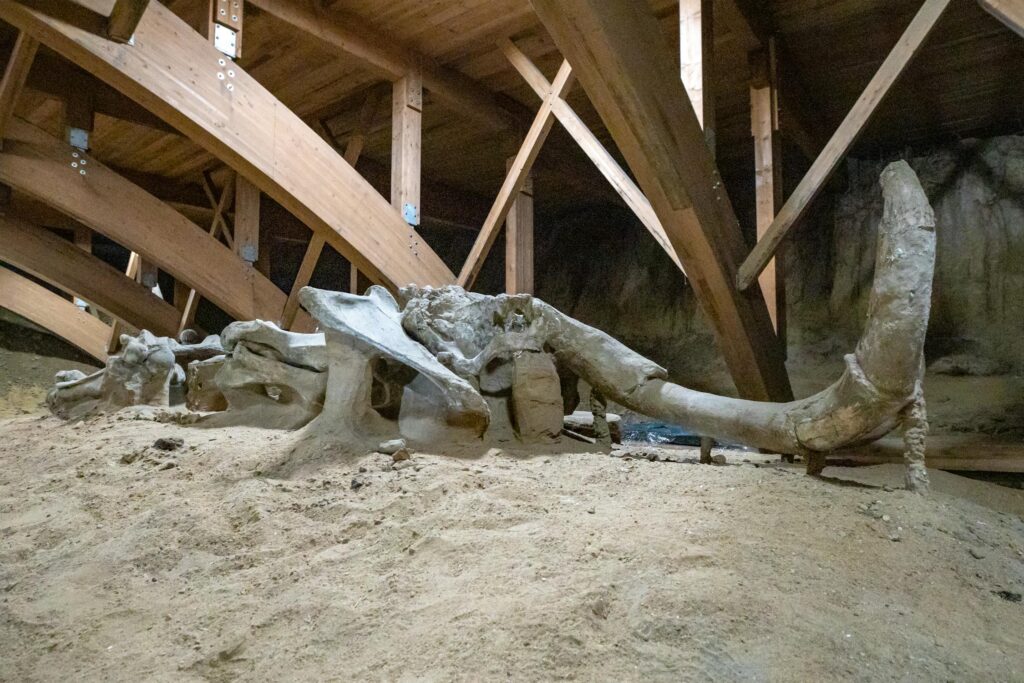
These eleven remarkable fossils represent just a fraction of the evidence that supports our understanding of evolution. Each discovery has added crucial pieces to the puzzle of life’s development on Earth, helping scientists reconstruct the complex branching patterns of evolutionary history. From the transition of fish to tetrapods, reptiles to mammals, and early primates to humans, these fossils demonstrate the gradual accumulation of changes that have produced the diversity of life we see today. They provide tangible evidence of intermediate forms and transitional features, just as evolutionary theory predicts.
Perhaps most importantly, these fossils remind us that science is a continuous process of discovery and refinement. Each new finding has the potential to challenge existing assumptions and deepen our understanding of the magnificent, intricate, and ongoing story of evolution that connects all living things through an unbroken chain of descent with modification stretching back billions of years.




